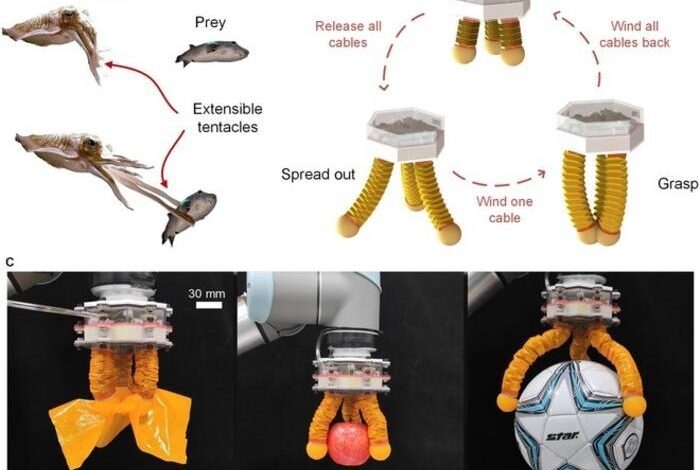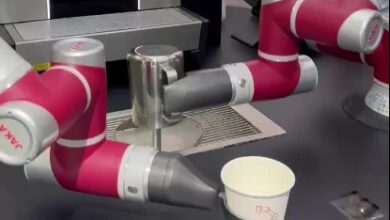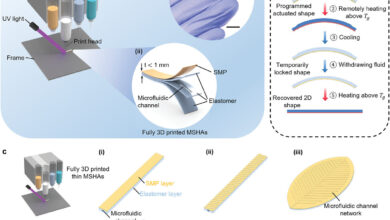Hybrid-Driven Gripper Redefines Object Handling

Researchers from Shanghai Jiao Tong University have developed a revolutionary hybrid-driven origami gripper that addresses the difficulty of grasping and manipulating things with exceptional diversity and precision. This is an impressive leap forward for robotics technology. This research was published in the journal Cyborg Bionic Systems.
This research could revolutionize the capabilities of robotic systems in various sectors, including manufacturing and healthcare.
The gripper’s origami-inspired shape can be adjusted for finger stiffness and length using a combination of pneumatic and cable-driven mechanics. This is a ground-breaking advancement in soft robotics. Its intricate design allows the gripper to manipulate a wide range of items by changing its physical properties to suit the task.
Conventional robotic grippers have trouble performing intricate movements or handling jobs because of their stiff design and lack of flexibility. In contrast, the origami gripper takes its cues from the biological compliance and suppleness seen in living things.
Its fingers combine the strength and precision of rigid components with the suppleness of soft materials. They are made of discrete thin metal sheets and fabric coated in thermoplastic urethanes. This enhances the gripper’s capacity to securely grab various materials without causing damage by enabling it to conform precisely to the surfaces it interacts with.
One of the origami gripper’s main innovations is the dynamic adjustment of the fingers’ length and stiffness. Through adjustments to the wire lengths and pneumatic system input pressure, the gripper can adjust its hold to support objects with varying weights and sizes. This function is beneficial when a range of things must be handled one after the other or in settings where flexibility and room are essential.
The gripper’s design has three separately controlled wires for each finger, which can pull either synchronously for consistent motion or differentially for intricate, multidirectional movement. This level of control is crucial for tasks requiring fine manipulation skills, including assembling fragile parts or navigating across congested or uneven surfaces.
The study team used a rigorous testing regimen to demonstrate the gripper’s functionality. Tests revealed that the gripper could efficiently modify its finger structure and gripping force to handle a variety of objects, from big, heavy footballs to thin shreds of cloth.
The gripper’s unique pneumatic-cable hybrid design, which offers both the strength required to handle bigger weights and the delicate touch needed for more fragile items, makes it versatile.
In the future, the researchers want to improve the gripper’s design even more to make it more capable of supporting loads and using less energy. These enhancements increase the gripper’s usefulness and make it a valuable instrument in various fields, such as consumer electronics assembly and surgery, where manual dexterity and delicate handling are critical.
This discovery signifies a noteworthy advancement in the continuous incorporation of soft robotics into industrial and commercial settings. As robotics technology advances, devices like the origami gripper have the potential to be extremely important in providing more effective, secure, and adaptable automated systems.
Journal Reference:
Zhang, Z., et al. (2024) Hybrid-Driven Origami Gripper with Variable Stiffness and Finger Length. Cyborg and Bionic Systems. doi.org/10.34133/cbsystems.0103
Source:



